#frisian
Text

Duke, -duce, Herzog & ziehen
Duke comes from the Latin word dux (leader). It's related to the verb dūcere (to lead; pull), whence English -duce, for example in to seduce (whose original Latin meaning was 'to lead astray').
The second part of German Herzog (duke) is cognate to dux. This part, -zog, is related to the German verb ziehen (to pull), cognate of dūcere.
Old English had cognates of both words. Its counterpart of Herzog was heretoga (army leader). In Middle English it became heretowe, which would've become modern *hartow. The Old English cognate of ziehen was tēon. This verb would've become *to tee if it had continued to exist. See the infographic for information about its past tense and past participle.
#historical linguistics#linguistics#language#etymology#english#latin#french#dutch#german#spanish#old english#old french#old dutch#old saxon#low saxon#old high german#old frisian#frisian#romanian#catalan#portuguese#greek#venetian#gothic#lingblr
48 notes
·
View notes
Text
My favourite thing about (most) Germanic languages:
Norwegian: due (pigeon), drue (grape)
Danish: due (pigeon), drue (grape)
Swedish: duva (pigeon), druva (grape)
Dutch: duif (pigeon), druif (grape)
Afrikaans: duif (pigeon), druif (grape)
Frisian: duif (pigeon), druif (grape)
German: Taube (pigeon), Traube (grape)
A few notable outliers: English, Scots, Icelandic
#if you add an r pigeon becomes grape#language#languages#language learning#norwegian#norsk#danish#dansk#swedish#svensk#dutch#nederlands#afrikaans#frisian#frysk#german#deutsch#english#scots#icelandic#íslenskur#språk
10K notes
·
View notes
Text
King’s Field Pendant
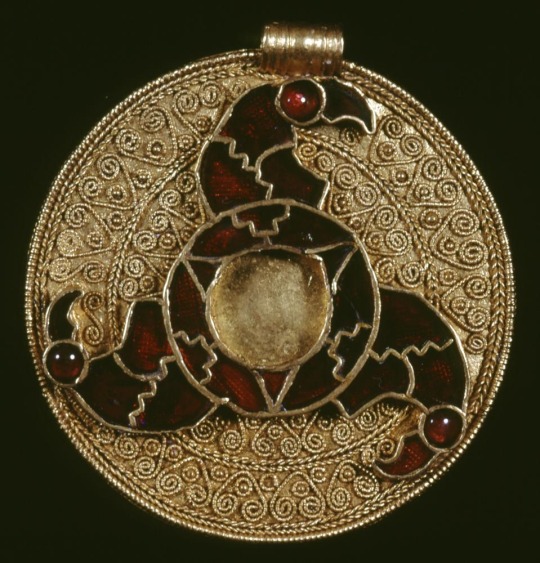
This magnificent pendant is the ultimate proof that the “Dark Ages” is an academic concept. Rather than Europe plummeting into darkness because of the “fall” of the Western Roman Empire, it’s more the lack of academic interest in the Early Middle Ages.
This Anglo-Saxon pendant was found on King’s Field (Kent) and is made of gold and garnet, but decorated extremely intricately with gabuchon, filigree and granulation. The garnet was used to form a triskele with round centre and ending in bird heads. At just 3,5 cm across, this was made by a master craftsman with materials from all over the known world.
The pendant might have been worn on a bit of string or rope, or it may have been worn as part of a glass beaded necklace. The pendant likely belonged to a woman.
The British museum, England
Museum nr. .1145.’70
Found in King’s Field - Kent, England
#merovingian#anglo saxon#viking#Vikings#frankish#carolingian#charlemagne#viking archaeology#germanic archaeology#Merovingian archaeology#Anglo Saxon archaeology#field archaeology#archaeology#field archaeologist#frisian#frisian archaeology#Germanic#jewelry#almandine#garnet#roman empire#western Roman Empire#germanic mythology#viking mythology#Norse mythology#pagan#kent#england#anglo Saxon England#paganism
821 notes
·
View notes
Text
yfke yfke yfke...
fun fact: despite their name, coffeeshops in the netherlands served mary jane and she's their top consumer
funny sign girl
watch ongezellig s'il vous plait

+ sketch

#ongezellig#yfke ongezellig#ongezellig yfke#ms paint#paint.net#fanart#dutch#netherlands#studio massa#ongezellig fanart#frisian
25 notes
·
View notes
Photo
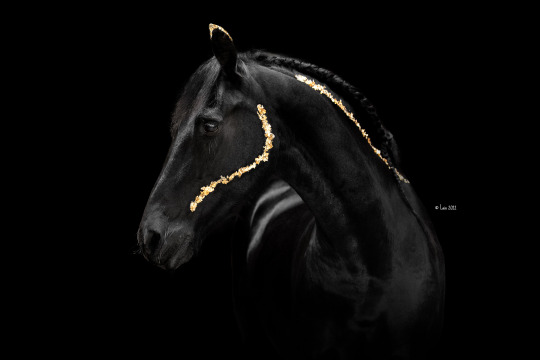



Rufke
209 notes
·
View notes
Text
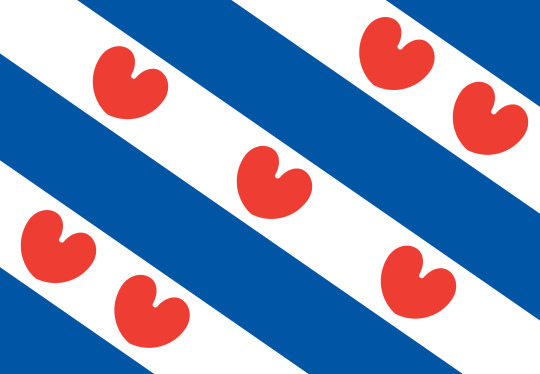
The flag of the province of Friesland or Frisian flag (West Frisian: Fryske Flagge; Dutch: Friese vlag), is the official flag of the Netherlands province of Friesland.
It consists of four blue and three white diagonal stripes; in the white stripes are a total of seven red pompeblêden, leaves of the yellow water-lily, that may resemble hearts, but according to the official instructions "should not be heart-shaped". The jerseys of the football club SC Heerenveen and the Blauhúster Dakkapel [fy] are modeled after this flag. (Wikipedia)
8 notes
·
View notes
Text
Du warst alles was ich hatte.
Du warst meine Welt.
Du warst meine Therapie.
Du warst mein Ort der Ruhe.
Du warst mein abenteuer.
Du warst mein sportpartner.
Du warst meine Verpflichtung.
Du warst mein Zuhörer.
Du warst mein Spiegel meiner Seele.
Du warst immer ehrlich
Du warst treu
Du warst direkt und klar
Du warst immer da
Du warst meine beste Freundin.
Du warst mein seelenpferd.
Du warst meine Herausforderung.
Du warst mein Physiotherapeut.
Du warst mein fitnessstudio.
Du warst mein rettungsboot in stürmischer See.
Du warst meine Zuflucht.
Du warst die die mich zum lachen bringt.
Du warst die die mich zur Ruhe bringt.
Du warst die die mich ermahnt hat wenn es nötig war.
Du warst die die einfach IMMER da war.
Du warst die die zugehört hat.
Du warst mein Leben.
Du warst alles was ich hatte.
Du warst so so so so so viel mehr als nur ein Pferd.
Kitana - seit du gingst, ist nichts mehr wie es mal war.
Und ich komm nicht klar, verdammt!
04042024
#verzweifelt#where is my safe place#angst#take care of me#herzschmerz#need a caregiver#einsam#gedankenkotze#ich kann nicht mehr#pferdemädchen#pferde#rip#i need a new horse#in heaven#i need u#struggle#frisian#soulhorse#dressurpferd#dressage
7 notes
·
View notes
Text

Willemshaven in Holland (not Germany as I first thought) abt. 1890 - 1900 (estimated). Practical rails for the loading.
Postcard / Found in a FB group
11 notes
·
View notes
Text

Frisian drinkinghorns at the exhibition 'Freedom, Feuds, Purgatory: the Middle Ages in the North'
Drinkinghorns are horns of generally bovine animals that are used by people to drink beer or mead (alcoholic fermented honey drink) from. Old Germanic peoples like Vikings, Saxons and Frisians are usually linked to these types of drinkingvessels, but in Asia and Africa cattleherding people are also known to use them.
Drinking from horns isn't a practical occurence. The chape prohibits it from putting the object down. That's why horns were used to pass around during celebrations and religious rituals or to drink the content in one go.
#food history#frisian#drinking horns#beer#friesmuseum#germanic paganism#mead#middle ages#drink#bovine#vikings#anglo saxon
52 notes
·
View notes
Text
round 1 - day 4 - 4 of 4
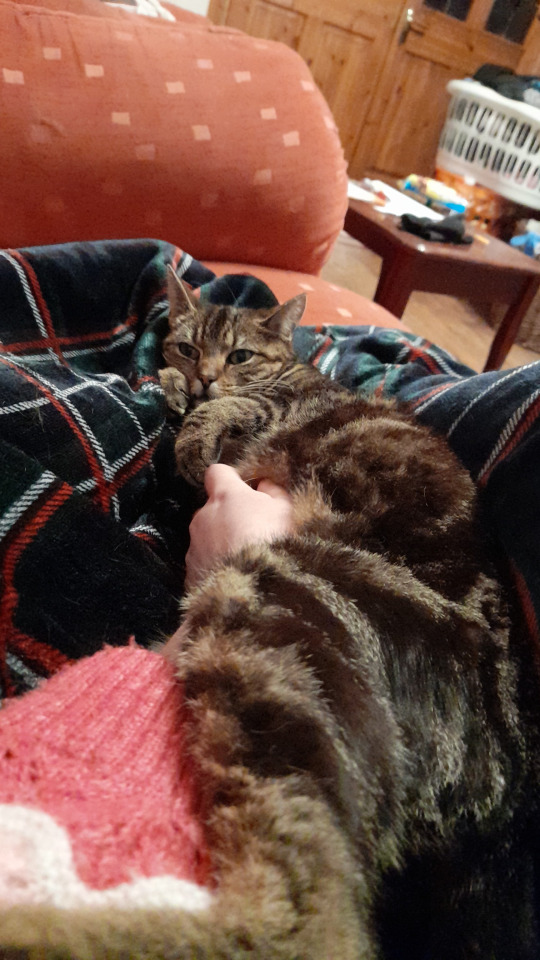
brought to you by: púisín
kot (polish) vs kat (frisian)
info and propawganda under the cut!
kot /kɔt/
Most cat word ever, can be uttered seconds after kot causes your precious, ceramic family heirloom to crash onto the ground from the shelf and shatter. For the third time. It's a generational thing now with each having a kot of their own and each of us bemoaning their affinity for destruction and terror.
Kot is a nice one. Simple, short, to the point, you have no doubts: yup, it's a kot!
Because its Polish and therefore best
POLISH LANGUAGE
kat /kɔt/
no propawganda provided :(
29 notes
·
View notes
Text
Lost for centuries beneath the sea, a sacred medieval structure has been rediscovered in Germany. Experts continue to uncover the mystery of the sunken Rungholt church, once the heart of a thriving settlement.
#Frisian#Germany#sanctuary#medieval#settlement#storm#medieval church#ancient#history#ancient origins
40 notes
·
View notes
Text
Dear means 'valued; precious; beloved'. However, in certain expressions it also means 'expensive', such as in to cost dear. This meaning, inherited from Proto-Germanic, became dominant in cognates of dear, such as Dutch duur, German teuer, and Swedish dyr. The infographic tells you the whole story.
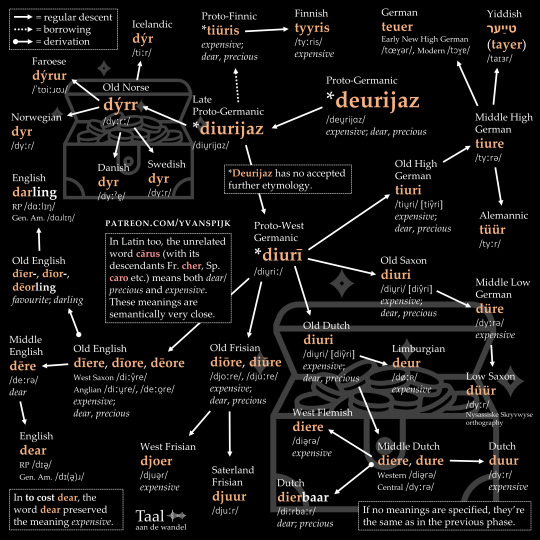
#historical linguistics#linguistics#language#etymology#english#dutch#german#low saxon#frisian#old frisian#old saxon#old high german#old english#old dutch#middle high german#middle dutch#middle english#middle low german#lingblr#proto-germanic#proto-west germanic#yiddish#west flemish#limburgian#saterland frisian#faroese#icelandic#norwegian#swedish#danish
111 notes
·
View notes
Text
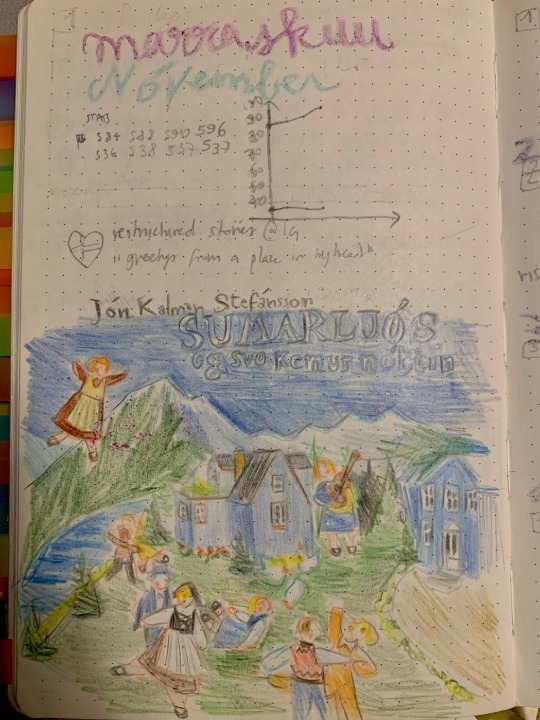
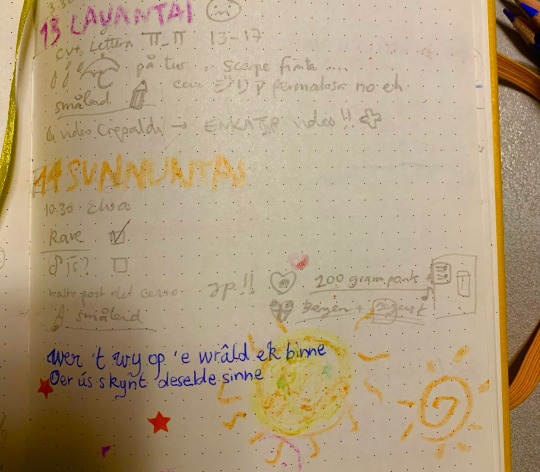

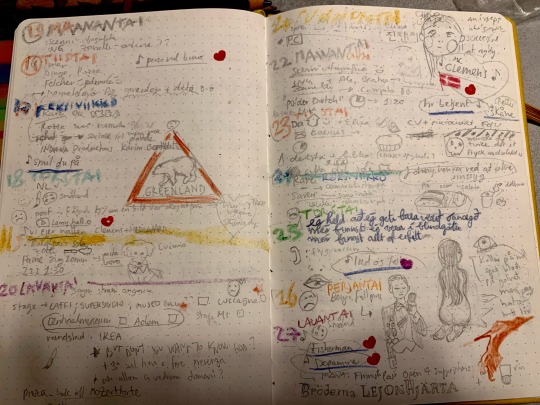
November 2021. Weird feelings. Lockdowns coming and going. Last university year. 🇫🇮 weekdays in Finnish; 🇸🇪 Quote from Brothers Lionheart. 🇮🇸 Cover of Sumarljós og svo kemur nóttin by Jón K. Stefánsson (Summerlight… and then Comes the Night) ;🔹Quote in West Frisian
11 notes
·
View notes
Text
Birka’s warrior woman
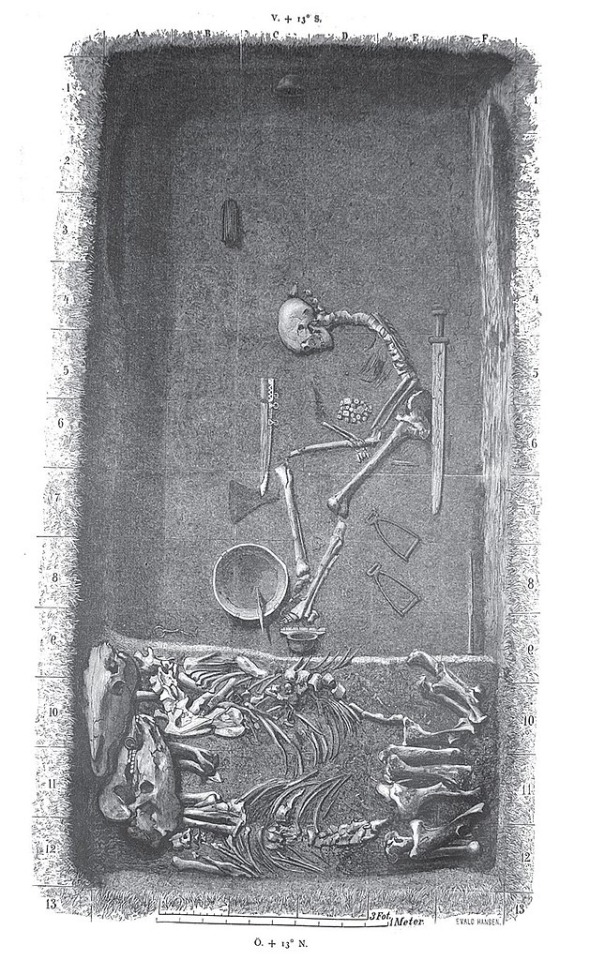
This grave was found on Birka (Björko) in 1878. The grave contained human remains, remains from two horses, bowls, weaponry, a shield(boss), a chess game and saddle stirrups. The burial room was built in wood. Most likely the person was buried seated, with the bones collapsing on themselves. Some remains of textile were found.
The assumption that the person was a man was quickly made and the “high status burial of a Viking warrior” was often cited in research.
It would take until 2017 when both osteological and genetic testing proved the person was in fact a woman. To this day it is the only genetically and archaeologically proven female warrior from the Viking age.
The reason I say genetically AND archaeologically is because it is assumed that gender was a very loose concept in the Germanic age. Biological gender wasn’t necessarily denied, but there are indications that people would take on “the role” of the other gender. A woman could “step up” as a man’s son, as seen in blood feud tales where the patriarch is killed, but if there is no son to avenge him, a woman would “take up the role” and set out, armed for revenge.
Biologically male individuals have been found with “female” attributes such as beads, pendants and certain decoration styles.
From the limited amount of research there is, it seems possible that cross-dressing, gender fluidity and gender role exchange were very normal before mass christianization.
Excavated by: Hjalmar Stolpe
Found in: Birka, Björko, Ekerö - Sweden
Drawing by: Hjalmar Stolpe
#frankish#merovingian#viking archaeology#archaeology#carolingian#charlemagne#field archaeology#viking mythology#merovingian archaeology#germanic mythology#valkyrie#Walküre#Wagner#richard wagner#norse mythology#anglo saxon#field archaeologist#frisian#viking#vikings#germanic#germanic folklore#germanic archaeology#odin#wodan#anglo saxon archaeology#history#jewelry#norse
293 notes
·
View notes
Text

Frisian woman, Germany, by Gregor Hohenberg
#frisian#germany#europe#western europe#folk clothing#traditional clothing#traditional fashion#cultural clothing
237 notes
·
View notes
Text
Prayer to Mona
Silver light,
grant us power
Dark of night,
grant us wisdom
Moon’s height,
grant us magic
Shine bright
grant us vision
Moonmother,
Nachmona
I honour you
#prayer a day#day 20#deity#dutch paganism#dutch goddess#dutch deity#dutch myth#frisian#goddess#moon#pagan#paganism#prayer#poem#paganblr
7 notes
·
View notes